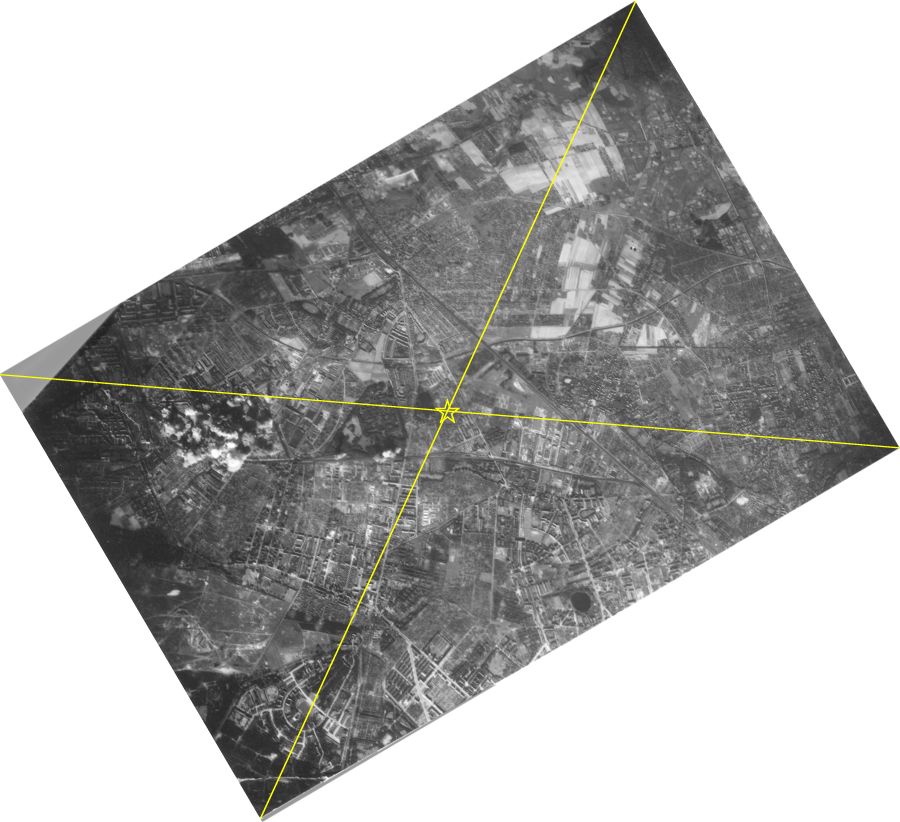|
It is natural to assume that the aircraft taking a strike photo is flying over the middle of the imaged scene. But, if you look more closely at what you are seeing, and give it some thought, it becomes apparent in some cases, that the aircraft is not over the center of the photo. One clue as to what is going on in strike photos is the bomb bursts. Assuming the camera ship is participating in the attack, the aircraft must have, or will have, flown over the target at some point in time. The bomb bursts should then be lined up with the major (long), or minor (short) axis of the photo. In the Berlin strike photo, the bomb bursts are in a corner. This suggests the aircraft has turned off target. Is there anything else we can divine from such photos? |
 |
| The above image is the original strike photo with the annotation removed, and rotated 149.6° to align it so true north as at the top of the page. Diagonals have been
drawn across the photo to identify the "principal point" of the photograph marked by the yellow star at the intersection of the diagonals. This is the point where the
camera appears to be pointed, assuming the image was not modified from its original format. The camera used to take this photo is a K-21 aerial camera. This camera is mounted in a compartment beneath the deck of the B-17 radio room. The negatives are 5" x 7" and lenses are pre-selected to provide the proper detail of the target. The photo is slightly larger than 5" x 7", and does not have the same aspect ratio (7/5). This suggests that the photo has been cropped, or the original annotation covers part of the image, but only slightly. This will reduce the accuracy of the estimated principal point's location. Next, we compare the strike photo to a modern day aerial photo of the Tegel district of Berlin. |